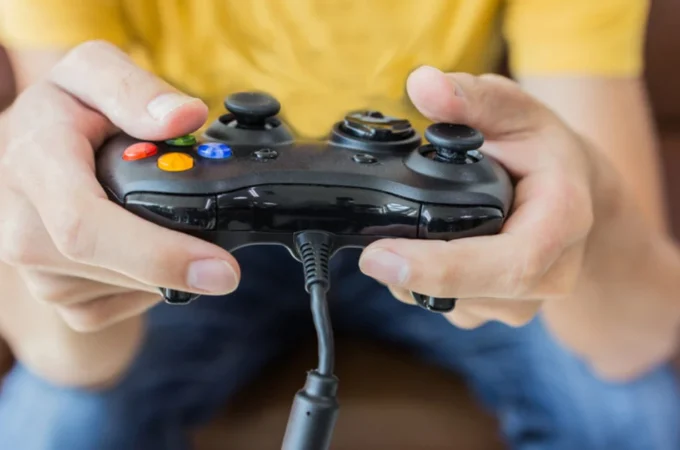
Your Guide To Kids Toothpaste
Often when you think about being healthy, everything from the food you eat to your amount of daily activity springs to mind. However, your child’s oral health is not only essential for their development but also their general health and wellbeing altogether. You see, good dental health starts at home.
The focus on kids toothpaste has shifted over the years. After heated discussions regarding fluoride, xylitol and fluoride-free formulas, the jury is still mostly out on what is best. Fortunately, we’ve put together this handy guide to give you an inside look into what to look out for:
Spotlight on fluoride

Whatever your feelings are towards fluoride, it is proven to strengthen enamel and reduce the risks of tooth decay. What’s more, it’s a naturally occurring mineral that is often found in your local water supply, as well as most toothpaste brands.
Fluoride strengthens the enamel (outer layer) of your teeth and works as a barrier against any potentially harmful bacteria. Once the enamel has absorbed the fluoride, it combines with the phosphate and calcium already present in your teeth to make fluoroapatite. This superhero substance works as a powerful shield against acid and is incredibly resistant to decay and cavities. Preventive dentistry specialists claim as well that home-based care with this substance is essential for oral health and contributes to the overall well-being of your teeth along with dental cleanings.
Due to its potency, children’s toothpaste is made from minimal quantities of fluoride, or reduced sugar, bacteria-fighting xylitol.
Only use age-appropriate quantities
It may surprise you, but your child’s oral health journey can start within the first few weeks of life. Although you can’t see them, your babies teeth are waiting just beneath their gums, waiting to cut through. Combined with the nutrient-packed, sugar-heavy breastmilk or formula swirling around their gums, bacteria already have a chance to grow and thrive within your little one’s mouth.
So, know your tooth/gum care:
- Babies: simply wipe their gums with a moist, clean cloth or specially formulated dental wipe to remove any leftover sugars or food debris
- First tooth appearance – toddler stage: as soon as there is a tooth visible, you can introduce a toothbrush into your little one’s daily routine. At this stage, a soft-bristled, round-headed toothbrush is all you need. You can add a grain of rice amount of age-appropriate toothpaste to help strengthen teeth and fight decay!
- Make sure your child doesn’t eat or lick toothpaste from the tube!
- Always supervise your child
- Brush two times a day for two minutes: once before bedtime and once in the morning as a minimum
- Fluoride based toothpaste should contain no less than 1,000ppm for under 3s – make sure you check the label before using
Children between the ages of 3 and 6 years old can use a pea-sized amount of toothpaste. But, make sure your kid only spits out the toothpaste and doesn’t rinse, as this can wash away the fluoride.
By 7 years old, your child should be able to brush their teeth independently. But it’s still a good idea to watch over them to ensure they brush for at least two minutes!
Brushing technique

Toothpaste plays a significant part in the toothbrushing process. Still, it can only work efficiently if your kid can establish a good technique. So show them how it’s done!
- Let your child watch you brush your teeth so they can see how much toothpaste you use, your movements and how you spit into the sink
- Guide your child’s hand so they can feel the correct movements for themselves
- Place a mirror in front of them as they brush, so they can see exactly what they are doing
- Make it fun! Sing a song, do a dance or get a timer involved
- Invest in a good toothbrush: whether your kid needs extra encouragement from choosing their favourite character or a brush with bright, flashing lights, there is a whole range of exciting brushes to choose from. So let your child pick one that they like!
- Make sure your child’s feet are firmly planted on the ground! Don’t let them run around with a toothbrush in their mouth. Accidents do happen!
Whatever toothbrush you buy for your child, make sure that it is the right size for them. Consider everything from how well they can grip the handle to the size of the bristles and brush head.
The power of choice
Your child’s taste palette is far more sensitive than your own. With varying tastes and flavour options available, it’s worth letting your kid pick their own toothpaste. From soft fruity apple, strawberry and watermelon, to more traditional muted minty flavours, there is a whole range of toothpaste varieties waiting to be discovered.
More than that, though, it’s about finding a toothpaste that works well for your child. The more eager they are to brush their teeth, the better relationship they will ultimately have with taking care of their teeth in the long run.
Visit the dentist
A surgeon is only as good as their tools, and it’s no different for your child. Investing in all the right toothbrushing equipment and toothpaste is one thing, but allowing a dentist to give your kid’s mouth the once over is another. Dentists know their stuff. It’s a simple fact.
Taking your child to the dentist just after their first tooth appears will not only allow them to get used to the environment but allow them to feel familiar with your dentist too. Plus, dentists can quickly identify any potential problems, such as plaque buildup or the first signs of tooth decay and put preventative measures in place before it’s too late.
Practice makes perfect, and the more used to the dentist’s chair your child is from a young age, the more positive experience they will have in the long run.
Strawberry, apple, spearmint, watermelon and even chocolate can now all be found in the dental aisle! Whether you want to embrace fluoride with open arms or go down the fluoride-free route, the most important thing is to establish good oral health care for your kid today.
Now that you have more insight into the world of kid’s toothpaste, what paste will make it to your bathroom?




